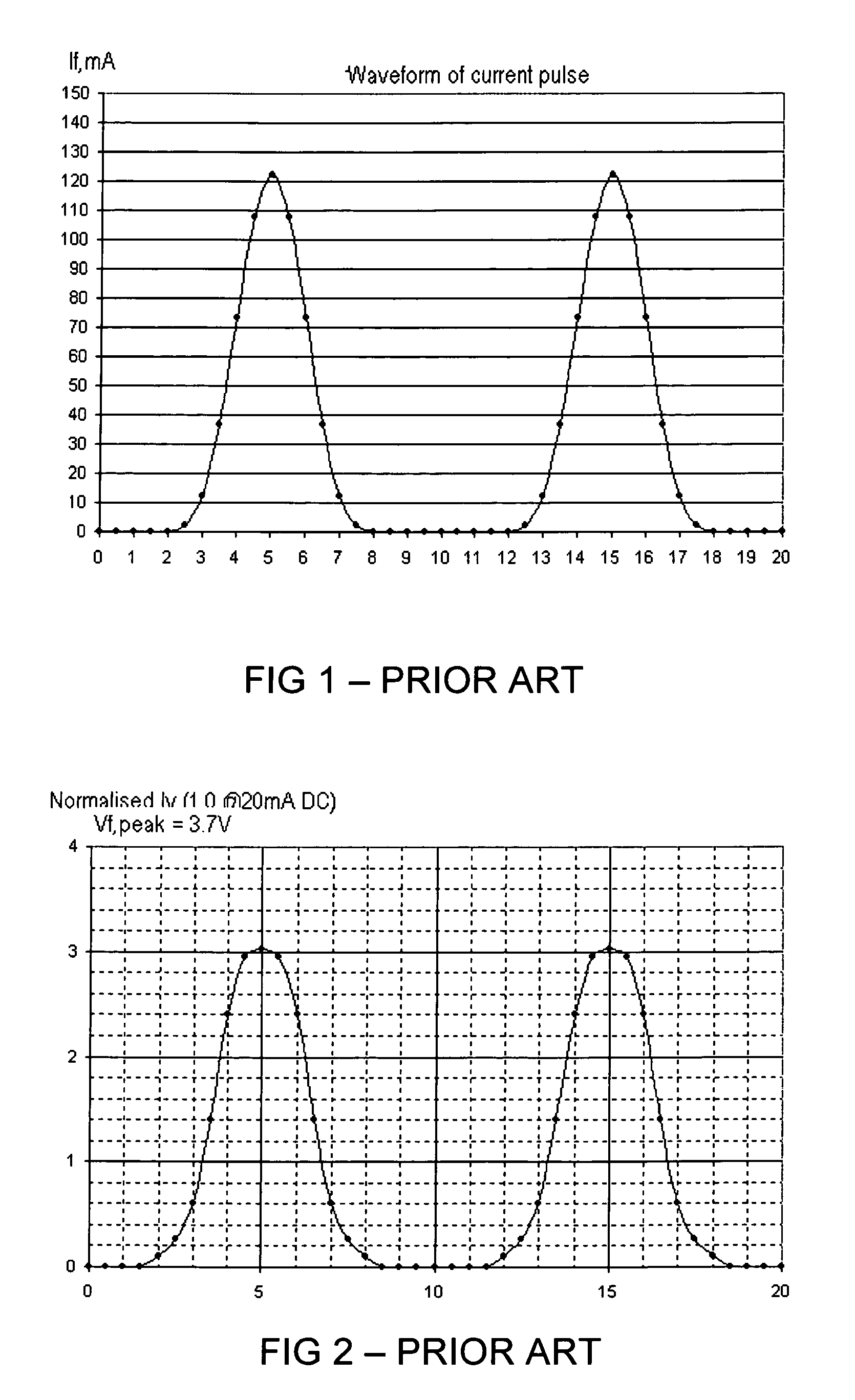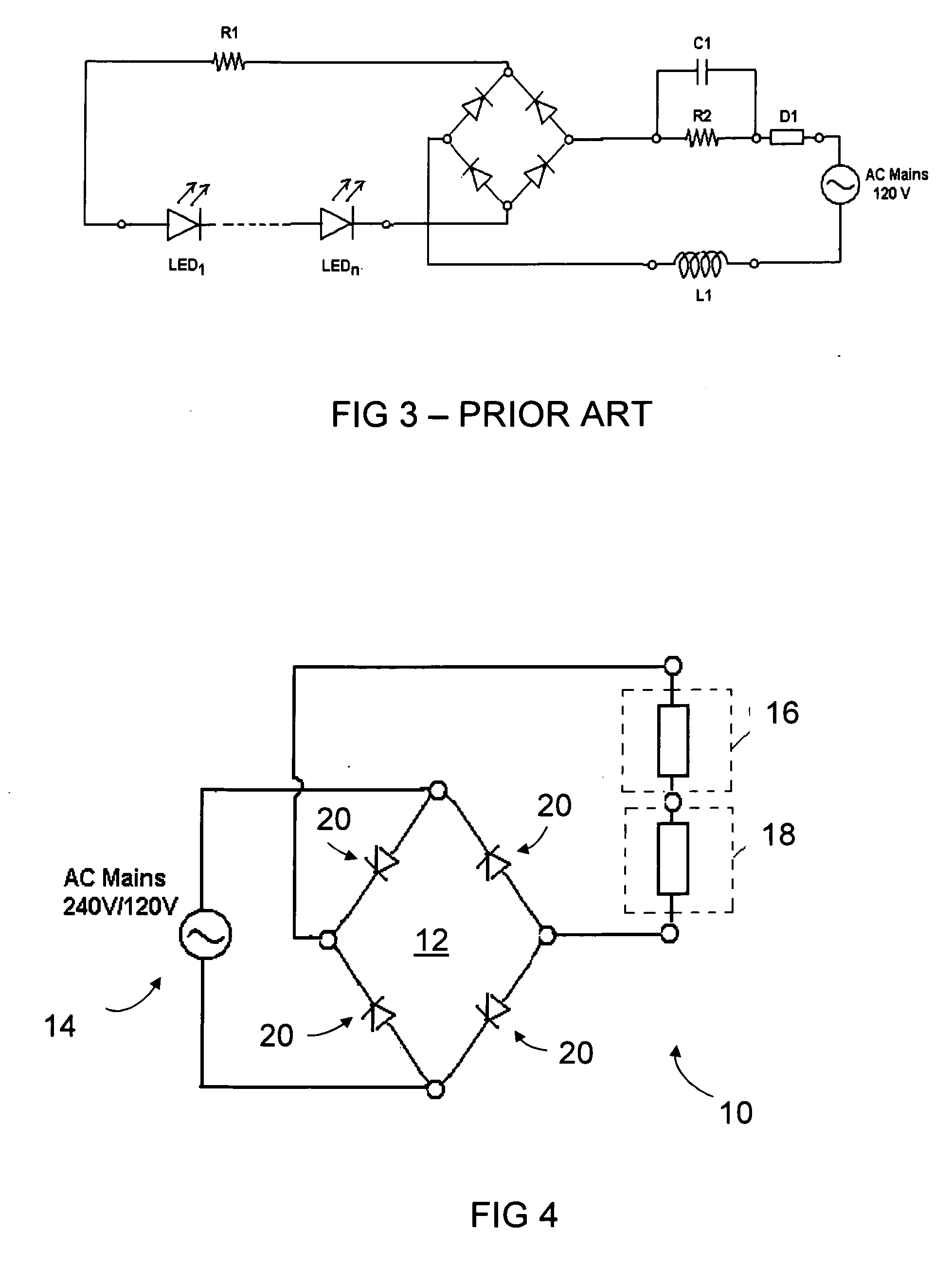AC to DC LED illumination devices, systems and methods
a technology of led lamps and drive circuits, applied in the direction of electric variable regulation, process and machine control, instruments, etc., can solve the problems of high replacement cost versus other lamp technologies, not very competitive to use expensive drive circuitry to operate led lamps off the mains, and cannot be said the same for led lamps operated directly from the mains power supply
- Summary
- Abstract
- Description
- Claims
- Application Information
AI Technical Summary
Problems solved by technology
Method used
Image
Examples
Embodiment Construction
[0091]Referring to FIG. 4, an illumination device 10 provided in accordance with embodiments of the present invention comprises a rectifier 12 coupled to an alternating current (AC) supply 14 for converting the AC supply 14 into a direct current (DC). A current limiting diode (CLD) module 16 is coupled in series to an output of the rectifier 12 and a light emitting diode (LED) module 18 is coupled in series between an output of the CLD module 16 and the rectifier 12.
[0092]The LED module 18 can comprise one or more LEDs in series and / or two or more LEDs in parallel. According to some embodiments, the LED module 18 can comprise one or more LED blocks, with each LED block comprising two or more LEDs in parallel and / or in series. The CLD module 16 can comprise a single CLD or two or more CLDs in parallel. The arrangements of the LEDs and the CLDs will be described in further detail hereinafter. It will be appreciated by the skilled addressee that the term “LED module” includes a single ...
PUM
 Login to View More
Login to View More Abstract
Description
Claims
Application Information
 Login to View More
Login to View More - R&D
- Intellectual Property
- Life Sciences
- Materials
- Tech Scout
- Unparalleled Data Quality
- Higher Quality Content
- 60% Fewer Hallucinations
Browse by: Latest US Patents, China's latest patents, Technical Efficacy Thesaurus, Application Domain, Technology Topic, Popular Technical Reports.
© 2025 PatSnap. All rights reserved.Legal|Privacy policy|Modern Slavery Act Transparency Statement|Sitemap|About US| Contact US: help@patsnap.com



